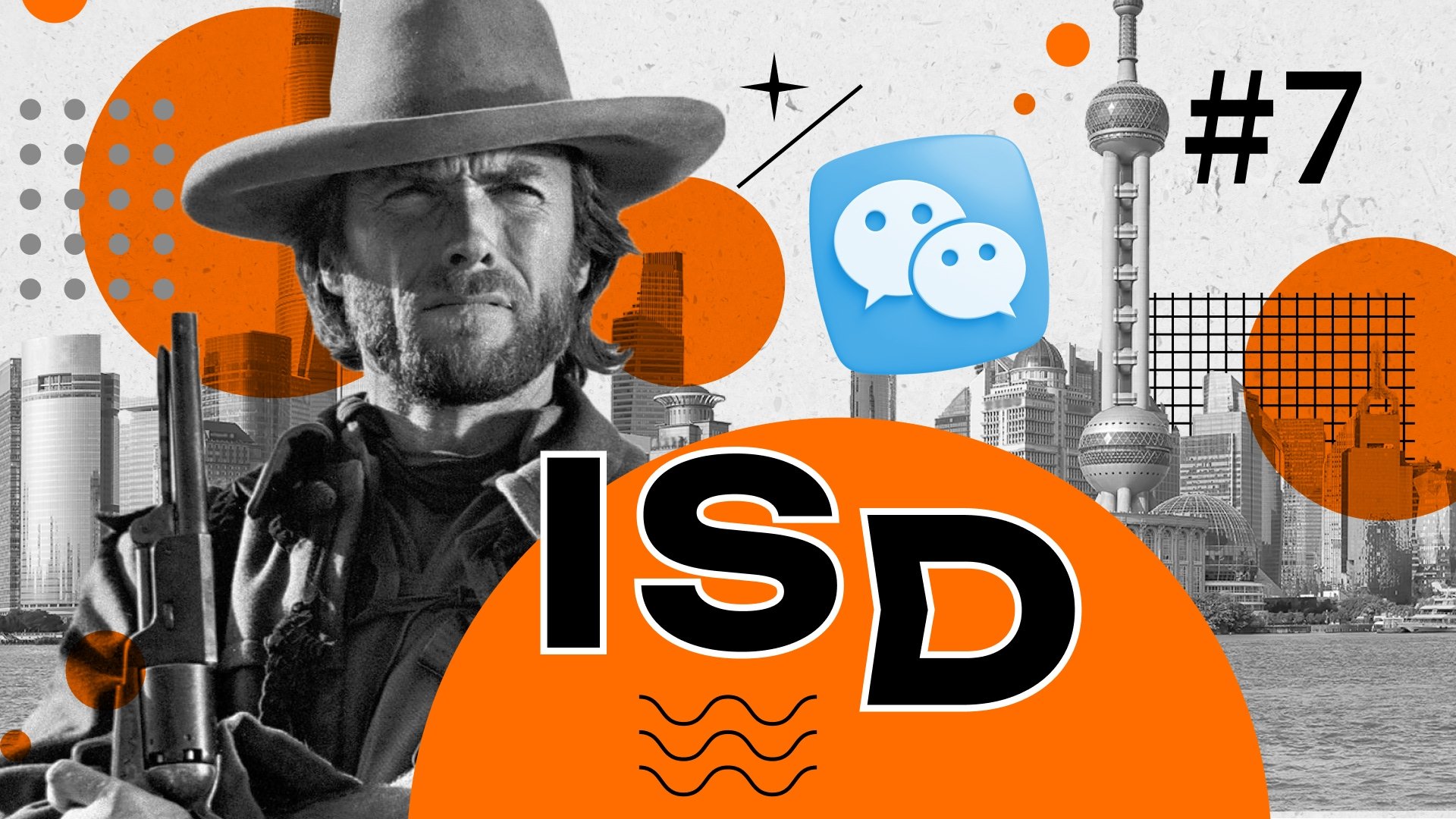Comprehensive Guide
to Risk Management
in Healthcare
- Introduction to Risk Management in Healthcare
- Types of Risks in Healthcare
- Operational Risks: The Backbone of Care
- Financial Risks: The Hidden Drain
- Cybersecurity Risks: Protecting Digital Lifelines
- Compliance Risks: Playing by the Rules
- Patient Safety Risks: A Category of Their Own
- Why These Risks Demand Attention
- Key Components of an Effective Risk Management Plan
- Identifying Risks: Where It All Begins
- Risk Assessment Frameworks: Prioritizing What Matters Most
- Developing Mitigation Strategies: From Plans to Action
- Risk Monitoring and Continuous Improvement: A Never-Ending Process
- Beyond the Basics: Thinking Holistically
- Technology’s Role in Healthcare Risk Management
- Risk Monitoring and Reporting Tools: Eyes on the Ground
- Data Loss Prevention Systems: Guarding the Crown Jewels
- SIEM Solutions and Incident Response: The Digital Bodyguards
- Artificial Intelligence in Risk Management: Smarter, Faster, Better
- Blockchain for Data Integrity: Trust in Every Transaction
- A Future Fueled by Innovation
- Challenges in Healthcare Risk Management
- Balancing Patient Care and Risk Control: A Tightrope Walk
- Limited Budgets and Resource Constraints: Doing More with Less
- Adapting to Rapid Technological Changes: Keeping Pace with Progress
- Regulatory Complexity: Navigating the Maze of Compliance
- Cultural Barriers: Building a Risk-Conscious Organization
- Turning Challenges into Opportunities
- SearchInform Solutions for Healthcare Risk Management
- Why SearchInform? A Comprehensive Approach
- Data Loss Prevention: Protecting the Heart of Healthcare
- SIEM Solutions: Real-Time Vigilance and Incident Response
- Beyond Cybersecurity: Addressing Broader Risks
- Impact of SearchInform: Clear and Measurable Results
- A Call to Action: Secure the Future of Your Healthcare Organization
-
-
-
-
-
-
- Understanding Financial Statement Fraud and Cybersecurity
- Combatting Fund Transfer Fraud with Cybersecurity Measures
- Combatting Invoice Fraud: Cybersecurity Strategies for Businesses
- Mobile Payment Fraud: Understanding the Risks and Prevention Strategies
- Online Banking Fraud: How to Stay Protected
- Understanding Payment Card Fraud and How to Prevent It
- Cyber Tax Fraud: Understanding and Preventing It
- Understanding Transaction Fraud in Cybersecurity
-
-
-
-
-
-
-
-
-
-
-
- Breach Attacks: Comprehensive Guide
- Cyber Attacks on Banks: Threat Landscape and Countermeasures
- Understanding Cyber Attack Vectors: the Anatomy of Cyber Threats
- Cyber Attacks in Healthcare
- Understanding Cyber Attacks on Critical Infrastructure
- Combatting Government Cyber Attacks: Strategies and Solutions
- State-Backed Cyber Attacks: Insights and Solutions
- Supply Chain Attacks
- Cyber Attack Prevention: Practical Tips and Solutions
- Types of Cyber Attacks: Understanding the Threats
-
-
- A Comprehensive Guide to Access Control Lists (ACLs)
- The Threat of Broken Access Control: How to Protect Your Systems?
- Discretionary Access Control (DAC)
- Understanding the Core Concepts of Mandatory Access Control
- Network Access Control: Key Strategies and Implementation Tips
- Understanding Non-Discretionary Access Control (NDAC)
- Understanding Access Control Policies for Enhanced Security
- Role Based Access Control (RBAC): A Comprehensive Guide
- Rule Based Access Control (RuBAC): A Comprehensive Guide
-
- Biometrics: What Is It and How Does It Work?
- What is Data Access and Why is it Important?
- What is Data Access Control (DAC)?
- What is Federated Identity and Federated Identity Management?
- IAM: Identity and Access Management
- Machine Identity Management
- Microsoft Identity Manager (MIM): A Comprehensive Overview
-
-
-
-
-
-
- Nonpublic Personal Information: What It Is and Why It Matters
- PII Data Classification: Importance, Challenges, and Best Practices
- Personal Information Protection: How to Protect Your Personal Information
- PHI vs PII: A Comparative Analysis of Protected Health Information and Personally Identifiable Information
- Understanding Personally Identifiable Information (PII) Protection
-
-
-
-
-
-
-
-
-
-
-
-
Introduction to Risk Management in Healthcare
Picture this: A hospital's computer systems are frozen by a ransomware attack, leaving doctors unable to access critical patient records. Or imagine a billing error where a patient is charged double, eroding trust in the system. These aren’t just hypothetical scenarios; they are real-world issues that underscore the importance of risk management in healthcare. Without a solid strategy, the ripple effects can be catastrophic—compromised patient care, financial instability, and tarnished reputations.
So, what exactly is risk management in healthcare? At its core, it’s about identifying, analyzing, and addressing potential risks before they spiral out of control. From safeguarding sensitive patient data to ensuring compliance with ever-changing regulations, healthcare risk management is a vital shield in an industry where lives are quite literally on the line.
Why is this so important? Because in the high-pressure world of healthcare, even a small oversight can have life-changing consequences. Proactive risk management ensures hospitals and clinics can focus on their mission: delivering exceptional care while staying resilient in the face of unexpected challenges.
And this is just the beginning. Let’s dive deeper into the diverse risks healthcare organizations face and how they can navigate these complexities with confidence.
Types of Risks in Healthcare
The healthcare industry operates in a complex ecosystem where risks lurk around every corner, threatening patient safety, financial stability, and institutional credibility. Risk management in healthcare is essential to navigate this maze, ensuring organizations can withstand potential pitfalls. Here’s a deeper look at the diverse types of risks healthcare providers face.
Operational Risks: The Backbone of Care
Think of operational risks as the gears of a well-oiled machine—when one cog falters, the entire system feels the strain. These risks arise from day-to-day operations and have a direct impact on the quality of care.
- Staffing Challenges: Overworked or understaffed teams are more likely to make critical errors, from incorrect diagnoses to delayed treatments. A burned-out nurse could mean the difference between life and death.
- Facility Management Failures: Imagine an ICU with malfunctioning ventilators or a power outage in a surgery suite. Poorly maintained facilities can escalate into life-threatening situations.
Financial Risks: The Hidden Drain
In healthcare, every penny counts, yet financial risks often remain an overlooked liability.
- Billing Errors: A miscalculated bill can not only upset patients but also cost hospitals millions annually. It’s not just a numbers game; it’s about maintaining trust.
- Insurance Fraud: Fraudulent insurance claims inflate operational costs, draining resources that could be used for patient care.
Cybersecurity Risks: Protecting Digital Lifelines
As healthcare becomes increasingly digitized, the industry becomes a prime target for cybercriminals.
- Data Breaches: A single breach can expose sensitive patient records, causing long-term damage to both patients and providers. Think of it as a digital heist with personal health information as the loot.
- Ransomware Attacks: When hackers freeze systems and demand payment, hospitals face a tough choice—pay up or risk patient care grinding to a halt.
Compliance Risks: Playing by the Rules
The healthcare industry is governed by a labyrinth of regulations, from HIPAA in the U.S. to GDPR in Europe.
- Regulatory Non-Compliance: Missing a regulatory deadline or failing an audit can lead to hefty fines and reputational damage.
- Legal Liabilities: Malpractice lawsuits or negligence claims can cripple an organization’s finances and trustworthiness.
Patient Safety Risks: A Category of Their Own
Patient safety is a cornerstone of healthcare, yet risks to safety often fly under the radar.
- Medication Errors: Mislabeling drugs or administering the wrong dose can have catastrophic consequences.
- Infection Control: Poor hygiene protocols can lead to hospital-acquired infections, undermining patient confidence.
Why These Risks Demand Attention
Each of these risks is a puzzle piece in the broader picture of healthcare risk management. Failing to address even one aspect can lead to cascading consequences, putting both patients and institutions at risk.
By proactively managing operational, financial, cybersecurity, compliance, and patient safety risks, healthcare organizations not only safeguard their operations but also build a foundation of trust. This trust is the lifeblood of any successful healthcare provider.
But how do organizations balance these responsibilities without getting overwhelmed? Let’s explore the key components of an effective risk management plan that can turn potential pitfalls into manageable challenges.
Key Components of an Effective Risk Management Plan
Risk management in healthcare isn't just about putting out fires—it’s about preventing them in the first place. By developing a comprehensive plan, healthcare organizations can identify vulnerabilities, assess their impact, and implement strategies to keep operations running smoothly. Let’s explore the essential building blocks of a robust healthcare risk management framework.
Identifying Risks: Where It All Begins
The first step to solving any problem is recognizing it exists. In healthcare, risks come in all shapes and sizes, making their identification critical.
- Tools and Techniques: Advanced methodologies like root cause analysis and failure mode effect analysis (FMEA) help uncover underlying issues before they escalate.
- Emerging Risks: Staying vigilant about evolving threats, such as new cybersecurity vulnerabilities or changes in regulatory standards, ensures no risk goes unnoticed.
- Stakeholder Input: Frontline healthcare workers often spot risks others might miss. Engaging staff across departments adds invaluable perspectives to the risk identification process.
Risk Assessment Frameworks: Prioritizing What Matters Most
Not all risks are created equal. A robust risk assessment framework helps healthcare organizations focus on the most pressing threats.
- Risk Matrix: Visual tools categorize risks based on their likelihood and potential impact, enabling leaders to allocate resources effectively.
- Scenario Analysis: What happens if a power outage occurs during a critical surgery? Scenario analysis prepares organizations for the unexpected.
- Quantitative vs. Qualitative Assessments: Combining data-driven analysis with expert judgment ensures a balanced approach to understanding risks.
Developing Mitigation Strategies: From Plans to Action
Once risks are identified and assessed, the next step is crafting strategies to mitigate them. These strategies fall into two categories:
-
Proactive Strategies: Prevention is the best cure. Examples include:
- Regular Training: Equipping staff with the knowledge to identify and respond to risks effectively.
- Routine Audits: Ensuring compliance with operational and regulatory standards.
- Cybersecurity Drills: Testing systems against simulated attacks to identify weaknesses.
-
Reactive Strategies: When the unexpected happens, preparation can make all the difference.
- Incident Response Plans: Clear protocols to address crises efficiently.
- Communication Frameworks: Transparent internal and external communication during incidents builds trust and minimizes chaos.
Risk Monitoring and Continuous Improvement: A Never-Ending Process
Risk management isn’t a one-time project—it’s an ongoing commitment.
- Real-Time Monitoring: Technology-driven solutions provide instant alerts for anomalies, ensuring risks are detected and addressed promptly.
- Feedback Loops: Regularly revisiting and updating risk management plans keeps them relevant as the healthcare landscape evolves.
- Cultural Integration: Creating a culture of risk awareness encourages every employee to act as a sentinel, identifying and addressing potential threats.
Beyond the Basics: Thinking Holistically
Risk management in healthcare extends beyond operational frameworks. It’s about building resilience, fostering a culture of accountability, and leveraging innovation to stay ahead. By mastering these key components, healthcare organizations can not only mitigate risks but also turn challenges into opportunities for improvement.
But effective risk management doesn’t stop here. How can cutting-edge technology revolutionize healthcare risk management? Let’s dive into the role of innovation in shaping a safer, more efficient healthcare industry.
Technology’s Role in Healthcare Risk Management
In today’s fast-paced digital world, managing risks without technology is like navigating a storm without a compass. Advanced tools have become the cornerstone of healthcare risk management, enabling organizations to anticipate threats, respond swiftly, and ensure seamless operations. Let’s explore how cutting-edge technologies are transforming this vital field.
Risk Monitoring and Reporting Tools: Eyes on the Ground
Imagine having a 24/7 watchtower that alerts you to potential threats before they become disasters. That’s precisely what modern risk monitoring tools offer.
- Real-Time Alerts: These systems continuously scan for anomalies, such as unusual login patterns or equipment malfunctions, providing instant notifications.
- Predictive Analytics: Advanced algorithms analyze historical data to predict potential risks, empowering organizations to take preventive action.
- Customizable Dashboards: Tailored reports provide healthcare leaders with actionable insights, helping them prioritize and address risks efficiently.

Data Loss Prevention Systems: Guarding the Crown Jewels
Sensitive patient data is the lifeblood of healthcare, and protecting it is non-negotiable. Data loss prevention (DLP) systems are the unsung heroes of healthcare risk management.
- Preventing Leaks: DLP tools ensure that sensitive information doesn’t fall into the wrong hands, whether through accidental sharing or malicious intent.
- Compliance Safeguards: With strict regulations like HIPAA, DLP systems act as a safety net, ensuring data security policies are enforced organization-wide.
- Mitigating Insider Threats: By monitoring internal data flows, DLP solutions can identify suspicious activity from within the organization.
SIEM Solutions and Incident Response: The Digital Bodyguards
Security Information and Event Management (SIEM) systems are the backbone of a robust cybersecurity strategy in healthcare.
- Threat Detection: SIEM tools analyze vast amounts of security data in real time, identifying potential threats like unauthorized access or malware infiltration.
- Automated Responses: When seconds matter, SIEM solutions can trigger automatic responses, such as isolating affected systems to prevent the spread of malware.
- Incident Investigations: These systems provide detailed logs and reports, aiding in forensic investigations and regulatory reporting after an incident.
Artificial Intelligence in Risk Management: Smarter, Faster, Better
AI is rapidly changing the game, turning healthcare risk management into a proactive, intelligent process.
- Fraud Detection: Machine learning algorithms can identify patterns indicative of insurance fraud or billing errors.
- Patient Monitoring: AI-powered devices alert caregivers to potential health risks, reducing liability and improving patient outcomes.
- Enhanced Cybersecurity: AI helps identify sophisticated cyber threats that traditional tools might miss, offering an additional layer of protection.
Blockchain for Data Integrity: Trust in Every Transaction
Blockchain isn’t just for cryptocurrencies—it’s a game-changer for healthcare risk management.
- Immutable Records: Blockchain ensures patient records are tamper-proof, reducing the risk of fraudulent alterations.
- Secure Transactions: Smart contracts can automate and secure transactions, such as billing and insurance claims, reducing the risk of fraud and errors.
- Interoperability: Blockchain facilitates secure data sharing between providers, improving collaboration while maintaining data integrity.
A Future Fueled by Innovation
The role of technology in healthcare risk management is growing by leaps and bounds. By integrating advanced tools like DLP systems, SIEM solutions, AI, and blockchain, healthcare providers can create a fortress of security and efficiency.
But technology is only as effective as the strategies behind it. How can organizations overcome the challenges that stand in the way of implementing these innovations? Let’s uncover the hurdles in healthcare risk management and explore solutions to turn these challenges into stepping stones for success.
Challenges in Healthcare Risk Management
Risk management in healthcare is like a high-stakes balancing act: one misstep, and the consequences can be dire. While technological advances and strategic frameworks offer robust defenses, the path to seamless implementation is riddled with challenges. These obstacles test the resilience, adaptability, and innovation of healthcare organizations.
Balancing Patient Care and Risk Control: A Tightrope Walk
In the quest to mitigate risks, healthcare providers face a crucial dilemma—how to implement risk controls without compromising patient care.
- Administrative Overload: Excessive risk protocols can burden healthcare professionals with paperwork and bureaucratic procedures, taking time away from patient care.
- Human Touch vs. Automation: While technology streamlines processes, over-reliance on automated systems may depersonalize healthcare, affecting patient trust and satisfaction.
- Real-Life Scenarios: Consider a hospital that delays treatment during a cybersecurity investigation. While ensuring data security is vital, such delays could adversely impact patient outcomes.
Limited Budgets and Resource Constraints: Doing More with Less
Risk management in healthcare often competes with other pressing priorities, like expanding patient services and investing in cutting-edge treatments.
- Understaffing: Many organizations lack dedicated risk management teams, leaving existing staff to juggle multiple roles.
- Infrastructure Gaps: Aging equipment and outdated IT systems can’t keep up with modern risk management demands, increasing vulnerabilities.
- Cost-Benefit Challenges: Allocating funds to preventive measures may seem like a luxury for cash-strapped facilities, even though it’s a long-term investment.
Adapting to Rapid Technological Changes: Keeping Pace with Progress
The rapid evolution of healthcare technology is both a blessing and a challenge. Staying ahead of the curve requires constant vigilance.
- Cyber Threats on the Rise: The healthcare sector is a prime target for hackers, with ransomware attacks increasing in sophistication. Organizations must constantly upgrade their defenses to outwit cybercriminals.
- Technology Adoption Resistance: Many healthcare professionals are wary of new tools, fearing they will disrupt established workflows or require steep learning curves.
- Integration Issues: New technologies often struggle to integrate with legacy systems, creating gaps that undermine the effectiveness of risk management strategies.
Regulatory Complexity: Navigating the Maze of Compliance
Compliance risks add another layer of complexity to healthcare risk management. Keeping up with evolving regulations is a monumental task.
- Overlapping Standards: Healthcare providers often have to comply with multiple frameworks, such as HIPAA, GDPR, and local health policies, which can create conflicting requirements.
- Audit Pressures: The constant threat of audits and penalties leaves organizations on edge, diverting resources away from other critical tasks.
- Dynamic Legal Landscapes: Laws and regulations are frequently updated, requiring organizations to adapt their practices almost in real time.
Cultural Barriers: Building a Risk-Conscious Organization
Even the best strategies can fail if the organizational culture doesn’t prioritize risk management.
- Employee Awareness Gaps: Staff members who don’t fully understand the importance of risk protocols may inadvertently bypass them.
- Resistance to Change: Implementing new risk management practices often meets pushback, especially in long-established institutions.
- Siloed Departments: When departments don’t collaborate, critical risks can go unnoticed or unresolved.
Turning Challenges into Opportunities
Every challenge in healthcare risk management also presents an opportunity for growth. For instance, streamlining risk protocols can enhance efficiency, while proactive investment in cybersecurity can save millions in breach-related costs.
But how do organizations turn these opportunities into actionable solutions? By leveraging tailored tools and expert guidance, healthcare providers can overcome these hurdles. Let’s explore how SearchInform’s solutions are helping healthcare institutions tackle these challenges head-on, transforming obstacles into stepping stones for a safer, more resilient future.
SearchInform Solutions for Healthcare Risk Management
Navigating the intricate maze of healthcare risk management requires precision, innovation, and specialized tools. That’s where SearchInform takes center stage, offering a suite of tailored solutions that not only address the challenges of healthcare risk management but also empower organizations to safeguard their operations, patients, and reputation.
Why SearchInform? A Comprehensive Approach
SearchInform is more than a technology provider; it’s a partner in resilience. The company’s solutions are designed to tackle the diverse and high-stakes risks faced by healthcare organizations, from data security to regulatory compliance. Whether it’s preventing data breaches, mitigating operational vulnerabilities, or ensuring adherence to strict healthcare regulations, SearchInform is the ally healthcare providers need.
Data Loss Prevention: Protecting the Heart of Healthcare
Sensitive patient data is the lifeblood of the healthcare industry. SearchInform’s Data Loss Prevention (DLP) tools are engineered to protect this invaluable asset.
- Guarding Against Breaches: DLP solutions monitor, detect, and prevent unauthorized access to sensitive data, ensuring it doesn’t leave secure environments.
- Customizable Policies: SearchInform’s tools can be tailored to meet specific organizational needs, ensuring compliance with laws like HIPAA while adapting to unique workflows.
- Insider Threat Protection: By monitoring internal communications and data transfers, DLP tools identify potential risks posed by employees—whether accidental or malicious.
Scenario: A hospital’s IT team notices unusual data transfers from a doctor’s workstation. Upon investigation, it turns out the doctor unknowingly clicked a phishing link. SearchInform’s DLP system intervenes, blocking the transfer and securing patient records before any data leaves the network.
SIEM Solutions: Real-Time Vigilance and Incident Response
In a world where cyber threats are ever-evolving, SearchInform’s Security Information and Event Management (SIEM) solutions provide healthcare organizations with the digital armor they need.
- Real-Time Threat Detection: SIEM tools analyze vast amounts of data to identify suspicious activity, such as unusual login attempts or malware infiltration.
- Automated Responses: When seconds matter, SearchInform’s SIEM solutions can automatically isolate affected systems, limiting the spread of potential threats.
- Comprehensive Reporting: Detailed logs and actionable insights streamline compliance reporting and incident investigations, making regulatory audits less daunting.
Beyond Cybersecurity: Addressing Broader Risks
SearchInform’s capabilities extend beyond digital security, addressing operational and compliance risks that are equally critical in healthcare.
- Operational Risk Monitoring: SearchInform’s tools can track anomalies in staffing patterns, equipment usage, and supply chain management, reducing disruptions in patient care.
- Fraud Detection: From detecting insurance fraud to uncovering billing irregularities, SearchInform’s fraud monitoring solutions protect healthcare providers’ financial health.
Impact of SearchInform: Clear and Measurable Results
SearchInform’s tools and solutions deliver results that go beyond addressing risks—they transform healthcare operations.
- Reduced Data Breaches: Organizations using SearchInform report fewer data security incidents, protecting sensitive patient information.
- Streamlined Compliance: Automated compliance features make navigating complex regulatory landscapes easier and more effective.
- Enhanced Operational Efficiency: Healthcare providers save valuable resources while increasing security and reducing vulnerabilities.
A Call to Action: Secure the Future of Your Healthcare Organization
Healthcare is about saving lives, and effective risk management ensures you can do just that—without interruptions, vulnerabilities, or compliance headaches. SearchInform offers the tools and expertise to turn risk management in healthcare from a daunting challenge into a strategic advantage.
Are you ready to safeguard your organization, protect patient data, and meet regulatory demands with confidence? Partner with SearchInform to revolutionize your healthcare risk management strategy and build a future where risks are no longer obstacles but opportunities for improvement. Your path to a safer, more resilient future starts here.
Full-featured software with no restrictions
on users or functionality
Company news
SearchInform uses four types of cookies as described below. You can decide which categories of cookies you wish to accept to improve your experience on our website. To learn more about the cookies we use on our site, please read our Cookie Policy.
Necessary Cookies
Always active. These cookies are essential to our website working effectively.
Cookies does not collect personal information. You can disable the cookie files
record
on the Internet Settings tab in your browser.
Functional Cookies
These cookies allow SearchInform to provide enhanced functionality and personalization, such as remembering the language you choose to interact with the website.
Performance Cookies
These cookies enable SearchInform to understand what information is the most valuable to you, so we can improve our services and website.
Third-party Cookies
These cookies are created by other resources to allow our website to embed content from other websites, for example, images, ads, and text.
Please enable Functional Cookies
You have disabled the Functional Cookies.
To complete the form and get in touch with us, you need to enable Functional Cookies.
Otherwise the form cannot be sent to us.

Subscribe to our newsletter and receive a bright and useful tutorial Explaining Information Security in 4 steps!

Subscribe to our newsletter and receive case studies in comics!







